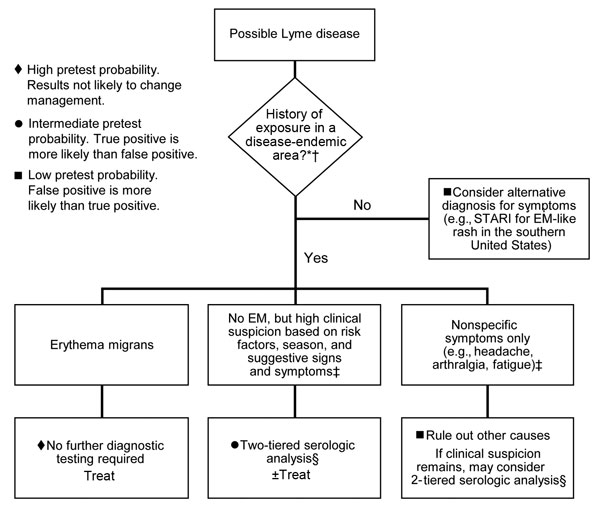Volume 22, Number 7—July 2016
CME ACTIVITY - Synopsis
Current Guidelines, Common Clinical Pitfalls, and Future Directions for Laboratory Diagnosis of Lyme Disease, United States
Figure 3

Figure 3. Clinical approach to diagnosis of early Lyme disease, United States. *See Figure 1. †Given the gradual geographic expansion of Lyme disease, testing may be warranted for patients with signs and symptoms of Lyme disease who were exposed in areas that border known disease-endemic regions. ‡For a more detailed discussion of symptoms as they relate to pretest probability, see section on exposure and pretest probability. §For recommended 2-tiered testing protocol, see Figure 2. STARI, Southern tick−associated rash illness; EM, erythema migrans.
1These authors contributed equally to this article.
Page created: June 15, 2016
Page updated: November 30, 2016
Page reviewed: November 30, 2016
The conclusions, findings, and opinions expressed by authors contributing to this journal do not necessarily reflect the official position of the U.S. Department of Health and Human Services, the Public Health Service, the Centers for Disease Control and Prevention, or the authors' affiliated institutions. Use of trade names is for identification only and does not imply endorsement by any of the groups named above.